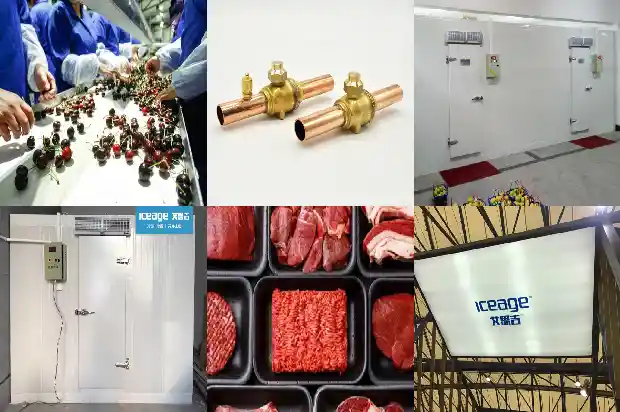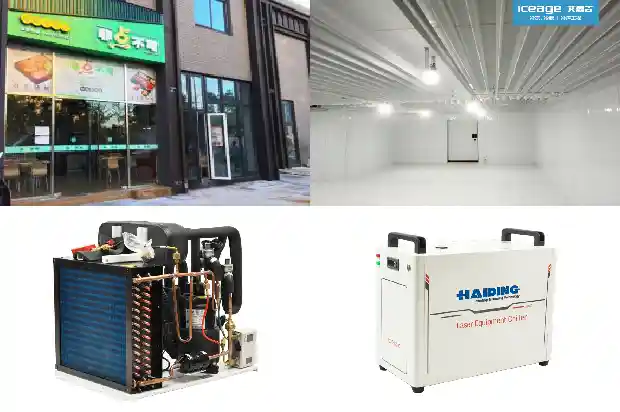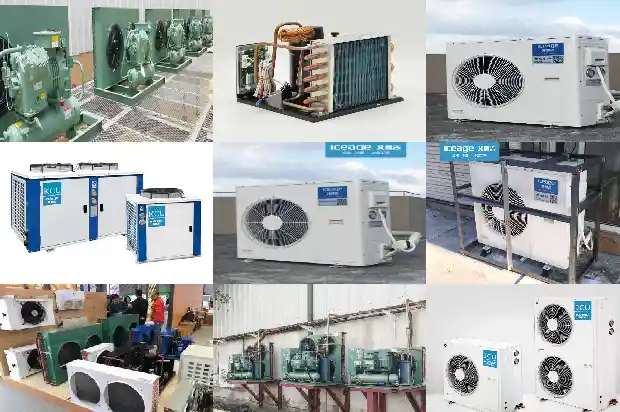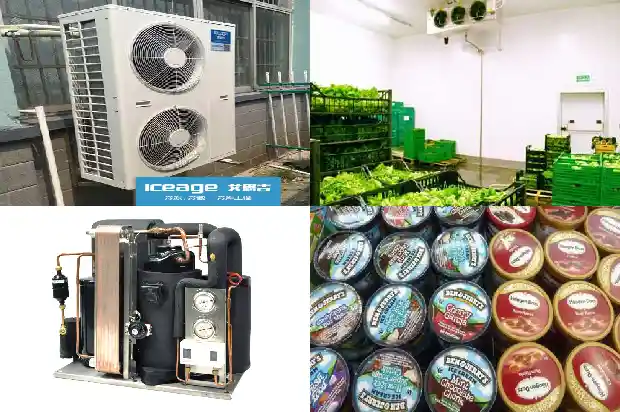Does a lower evaporation temperature result in a larger refrigeration capacity, or does a higher evaporation temperature lead to a larger refrigeration capacity?
2025-03-02
I. The Relationship between Evaporation Temperature and Evaporation Pressure
- Evaporation Temperature and Evaporation Pressure: The evaporation temperature is the temperature at which the liquid refrigerant boils.
In the actual refrigeration systems used, due to different applications, the evaporation temperatures vary. However, the evaporation temperature of the refrigerant must be lower than the minimum temperature required to be reached by the cooled material, so that there is a certain temperature difference between the refrigerant in the evaporator and the cooled material to ensure the driving force required for heat transfer. In this way, when the refrigerant evaporates, it can absorb heat from the cooled material and achieve low-temperature heat transfer. The pressure corresponding to the evaporation temperature is the evaporation pressure.
- The Relationship between Evaporation Temperature and Evaporation Pressure: The lower the evaporation pressure, the lower the evaporation temperature.
If the evaporation temperature of the system is continuously reduced, the refrigeration capacity of the refrigeration compressor will continuously decrease. The refrigeration speed does not necessarily become faster. Moreover, the lower the evaporation temperature, the lower the refrigeration coefficient of the system, and the system load continuously increases, resulting in a continuous increase in the energy consumption of the system, especially in low-temperature systems. Tip: The evaporation temperature should not be blindly reduced, and the evaporation temperature should be determined and adjusted according to different working conditions.
- The Application of Evaporation Temperature and Evaporation Pressure: The refrigeration system utilizes the characteristic that the boiling point of the refrigerant changes with pressure, so that the refrigerant vaporizes under low pressure to absorb the heat of the cooled substance and reduce its temperature to achieve the refrigeration purpose. The vaporized refrigerant is then condensed into a liquid state under high pressure. Through such a cyclic operation, by means of the heat absorption and heat release processes when the refrigerant changes its state, the room temperature is adjusted.
- Reasons for Abnormal Evaporation Temperature: Common reasons for a low evaporation temperature include: small opening degree of the expansion valve, lack of refrigerant in the refrigeration system, blockage of the throttling mechanism, blockage of the filter, insufficient air volume of the indoor unit, and serious frosting of the evaporator. Common reasons for a high evaporation temperature include: too large opening degree of the expansion valve, excessive refrigerant, air in the system, blockage at the outlet of the evaporator, poor condensation effect, low efficiency or low rotation speed of the compressor, broken valve plate or leakage of the compressor, and too large heat load, etc. Some people ask whether the lower the evaporation temperature, the larger the refrigeration capacity, or the higher the evaporation temperature, the larger the refrigeration capacity. It should be said that when the condensing pressure is constant, the higher the evaporation temperature, the larger the refrigeration capacity.
II. The Relationship between Condensing Temperature and Condensing Pressure
- Condensing Temperature and Condensing Pressure: The condensing temperature refers to the temperature at which the superheated refrigerant vapor condenses into a liquid in the condenser. The refrigerant gas flow compressed into a high-temperature and high-pressure state during the compression stroke flows into the condenser, where it is cooled by air or water, releases the condensation heat, and becomes a liquid. The pressure corresponding to the condensing temperature is the condensing pressure.
- The Relationship between Condensing Temperature and Condensing Pressure: During the condensation process of the refrigerant, if the condensing pressure is constant, the condensing temperature is also constant, and there is a one-to-one correspondence between them. Taking the R410A refrigerant as an example... (Here, the original text does not specifically elaborate on the corresponding relationship. It is speculated that there is a chart to illustrate it, but it is not reflected in the text)
- The Application of Condensing Temperature and Condensing Pressure: The factors affecting the condensing temperature include the temperature of the cooling water, the flow rate of the cooling water, the size and cleanliness of the heat transfer area of the condenser. The condensing temperature is mainly limited by the temperature of the cooling water, which varies depending on the usage area and season. However, it must be higher than the temperature of the cooling water to ensure that there is a certain temperature difference between the refrigerant in the condenser and the cooling water for heat transfer.
- Reasons for Abnormal Condensing Temperature: The level of the condensing temperature depends on the temperature of the cooling air or cooling water. Generally, the air condensation temperature is 8 - 12°C higher than the ambient temperature, and the water condensation temperature is 3 - 5°C higher than the outlet temperature of the cooling water. If the condensing temperature is too high, the condensing pressure will correspondingly increase, the compression ratio will increase, the shaft work will increase, the volumetric efficiency will decrease, the actual exhaust volume will decrease, and the refrigeration capacity will also decrease. In addition, when the condensing pressure rises, the exhaust pressure will rise, and the exhaust temperature will also rise.
For every 1°C increase in the condensing temperature corresponding to the condensing pressure, the power consumption will increase by about 3%. It can be clearly seen from the T-S diagram that when the condensing temperature of the refrigeration system increases, the refrigeration capacity decreases. Reasons for a too high condensing temperature:
4.1 Water cooling: The condenser is too small, the flow rate of the cooling water is insufficient, the temperature of the cooling water is too high, the heat exchange area of the condenser is reduced, there is scale on the pipeline of the condenser, the refrigerant charge is excessive, etc.
4.2 Air cooling: There is air in the condenser, the refrigerant charge is excessive, the fins are blocked or the heat dissipation is poor, etc.
III. Reference Data for Determining Evaporation Temperature and Condensing Temperature
- Water cooling: Evaporation temperature = Outlet temperature of the chilled water - 5°C (Dry evaporator), and if it is a flooded evaporator, it is - 2°C. Condensing temperature = Outlet temperature of the cooling water + 5°C.

- Air cooling: Evaporation temperature = Outlet temperature of the chilled water - 5 - 10°C; Condensing temperature = Ambient temperature + 10 - 15°C, generally taking 15.
- Cold storage: Evaporation temperature = Design temperature of the cold storage - 5 - 10°C.
Related Articles
- Why Does the Evaporation Temperature of the Refrigeration System Drop Too Low? And Why is the Condensing Pressure Too High?
- Principle of Multiple Storages in One Unit and Evaporation Pressure Regulation Methods
- Cause Analysis of High Discharge Temperature and Overload Protection of Modular Units
- Understand Correctly the Dry-bulb Temperature, Dew-point Temperature and Wet-bulb Temperature
- What Misconceptions Should Be Avoided in Low - temperature Refrigeration System Repairs
- Introduction to the Advantages of Dual - temperature Cold Storage
- What are the characteristics of low-temperature cold storage?
- Requirements of Cold Storage Insulation for Maintaining Stable Temperature Inside
- Temperature Gradient Differences between Deep Foundation and Surface of Civil Cold Storage
- Temperature Requirements for Various Cold Storages
- Is the heating effect of air source heat pump air conditioner with enhanced vapor injection really good under low temperature conditions?
- 15 Reasons for Excessive Temperature Rise of Motors
- Types and Temperature Requirements of Seed Cold Storages
- Influence of Condensing Temperature Variation on Vapor Compression Refrigeration System
- Introduction to the Relationship between Refrigerants and Cold Storage Temperatures
- What are the effects of pressure and temperature on the refrigeration system of a cold storage?
- Application of Economizer in Air-cooled Heat Pumps and Low-temperature Screw Compressors
- Common faults in refrigeration system (discharge temperature and pressure)
